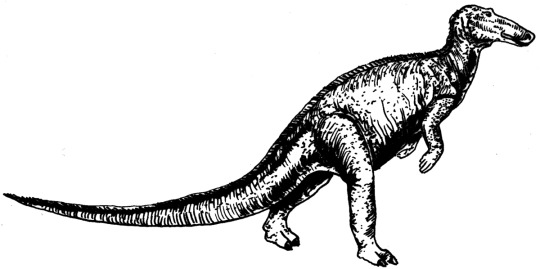#trachodon
Text

39 notes
·
View notes
Text

Webster's Beginning Book of Facts. 1978.
165 notes
·
View notes
Text
Dinofact #109
Edmontosaurus' taxonomic history is quite complicated, with specimens belonging to E. annectens being classified as many other species, such as Hadrosaurus, Diclonius, and Claosaurus, as well as the dubious genera Trachodon and Thespesius, and, now synonymous with Edmontosaurus, the genera Anatosaurus and Anatotitan.
Source: Wikipedia
#dinosaur#dinosaurs#paleontology#edmontosaurus#edmontosaurus annectens#e. annectens#taxonomy#hadrosaurus#diclonius#claosaurus#trachodon#thespesius#anatosaurus#anatotitan#fun facts#trivia#dinosaur trivia#dinosaur fun facts#24th#december#2022#december 24th#december 2022#december 24th 2022
7 notes
·
View notes
Note
I would like to see Trachodon and pictures from the Sinclair Dinoland which was in the Worlds Fair in 1960s and animatronic dinosaurs :)
And so you shall!
Honestly, dubious genus or not, I just love the name Trachodon, it's such an iconic dinosaur name to me.
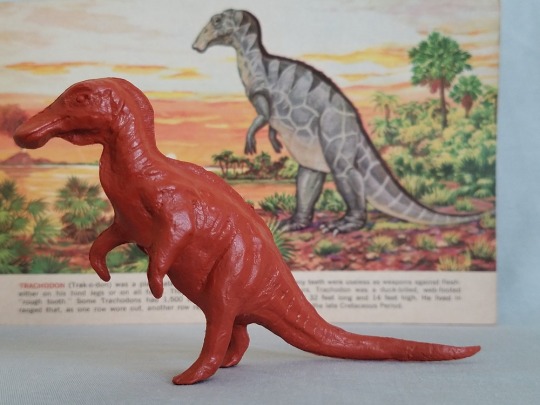
[ photo source ]
Followers, what are some of your favorite dinosaur names?
19 notes
·
View notes
Text

#OnThisDay in 1925, the silent film The Lost World was released.
The fantasy monster adventure film was based on Arthur Conan Doyle’s 1912 novel, and featured special stop motion effects by Willis O’Brien (known later for his stop motion for King Kong in 1933)
The movie combined animated #dinosaurs with live-action, and the dinosaurs were based on the paleoart of Charles Knight. This film paved the way for other dinosaur movies, including Jurassic Park
Dinosaurs in The Lost World included Brontosaurus, Allosaurus, Trachodon, Triceratops, Agathaumas, Tyrannosaurus (and involves a lot of attacks)
3 notes
·
View notes
Text
Reviewing every Dinosaur movie ever: #7 Along the MoonBeam Trail

RELEASE DATE: 1920
SYNOPSIS: Two boys and their uncle camp in the woods where he tells stories of Queen Mab, the fairy of dreams, before wishing them goodnight. While they sleep, Queen Mab appears and awakens them, gifting them a magic ring and the promise to grant any wish. They wish for a plane that can fly them to the moon, which she grants before disappearing. The fly up into space, were they meet Mars, the Roman God of war now nothing but a celestial traffic cop, and the Man in the Moon, who smokes a huge cigar. The cross paths with a witch on a broom before being attacked by a Pterodactyl and land on an alien planet where they hide in a cave from dinosaur threats until Queen Mab returns to save them.

THOUGHTS: If the synopsis didn’t make it clear, this is a weird movie. It’s delightful really, the fairy tale beginning goes into a goofy and comedic space trip, ending with a horror segment on a prehistoric alien world. I do mean that, the dinosaurs are presented as terrifying, with the cast cowering in a cave while scary music plays. This was the film debut of Stegosaurus and Trachodon (now known as Edmontosaurus) with a return of our favorite the T. rex, which quite brutally kills the poor Trachodon with animated blood and all. They make it quite clear, dinosaurs are scary! Slumber Mountain was accidentally eerie and had its moments of action, but this is the first time I think cinema made an effort to cast dinosaurs in a horror light, a role they do fill quite nicely and a trend we still see today.
This is also the debut of Pterosaurs in movies, kind of, because calling this thing a pterosaur feels like an insult...

The story goes that this film is a result of a falling out with animators Herbert M. Dawley and Willis O’Brien over who contributed more to the creation of the widely successful Ghost of Slumber Mountain, the former deciding to take it into his own hands and make a dinosaur movie all on his own. The quality of the effects certainly aids his argument, while maybe not on the level of O’Brien in his prime, they certainly compete with Slumber Mountain. It’s a good looking movie and a monument to how fast stop motion was developing in these years of its prime.

Such an old classic once considered lost media, but most of it has been restored and made public for your viewing, so be grateful and give it a watch.
RATING: 7/10
13 notes
·
View notes
Text






Lambeosaurus is a genus of hadrosaurid dinosaur that lived throughout what is now North America during the late cretaceous period some 83 to 72 million years ago. Lambeosaurus has a complicated taxonomic history, beginning in 1902 with Lawrence Lambe's naming of hadrosaurid limb material and other bones from Alberta as Trachodon marginatus. In the same publication he named an upper jaw from the dinosaur park formation as Trachodon altidens. In the same volume, Henry Fairfield Osborn suggested T. altidens could belong to a new genus, which he labelled "Didanodon". Throughout the 1910s paleontologists found numerous additional hadrosaur remains in the dinosaur park formation which would variously be assigned to T. marginatus, or a genus called Stephanosaurus .Unfortunately, there was very little to associate these new remains with the scrappy earlier marginatus material, so in 1923 William Parks proposed a new genus and species with both generic and specific names honoring Lambe (who had died four years earlier): Lambeosaurus lambei which would additionally be made the type genus of the new subfamily Lambeosaurinae. Over the next century additional remains would be recovered and the genera Procheneosaurus, Tetragonosaurus, & Hadrosaurus paucidens would be found to be lambeosaurus. Today two species are definetly confirmed being L. lambei & L. magnicristatus, with a 3rd possible species in L. clavinitialis. Reaching around 23- 26ft (7- 8m) in length and 2.8–3.6 short tons (2.5–3.3 metric tons) in weight, Lamberosaurus was a rather large ornithopod dinosaur which like other hadrosaurids could move about on both two legs and on all fours. By being able to switch between quadrupedal and bipedal locomotion Lambeosaurus could browse upon anything from low to moderately high growing vegetation as well as travel considerable distances fairly efficiently. Its most distinctive feature, the crest, varied between species as in L. lambei, it had a hatchet-like shape with the "hatchet blade" projected in front of the eyes, and the "handle" was a solid bony rod that jutted out over the back of the skull. While in In L. magnicristatus, the "handle" was greatly reduced, and the "blade" expanded, forming a tall, exaggerated pompadour-like crest.
Art belongs to the following creators
Lambeosaurus: Christopher DiPiazza
https://twitter.com/ChrisDPiazza/status/1422185565122928649
Lambeosaurus: Julio Lacerda
https://paleoart.tumblr.com/post/630798356032208896/a-young-lambeosaurus-gets-separated-from-the-herd
Lambeosaurus: Antonin Jury
https://www.deviantart.com/antoninjury/art/Studio-252MYA-Lambeosaurus-lambei-651748007
#pleistocene pride#pliestocene pride#mesozoic#dinosaur#dinosaurus#cretaceous#hadrosaur#ornithopod#lambeosaurus
4 notes
·
View notes
Photo


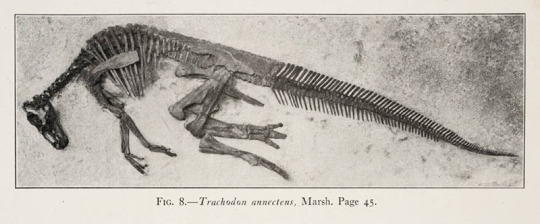



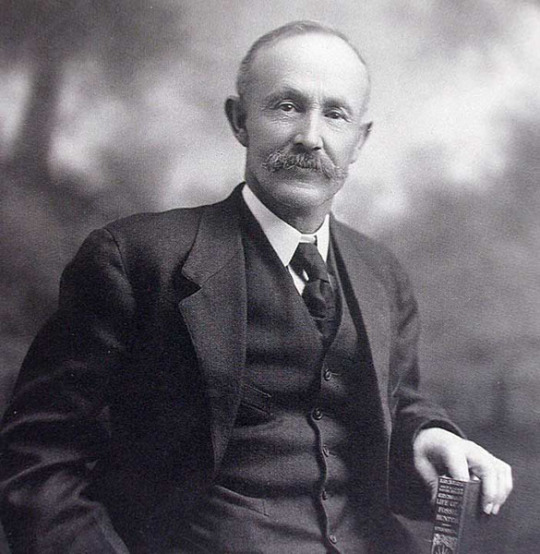

Charles H. Sternberg – Scientist of the Day
Charles H. Sternberg, dinosaur hunter extraordinaire, was born June 15, 1850, in New York state.
read more...
#Charles Sternberg#trachodon#Red Deer River#mummy#dinosaurs#histsci#20th century#history of science#Ashworth#Paper Dinosaurs#Scientist of the Day
62 notes
·
View notes
Photo

Trachodon by Merle Smith
22 notes
·
View notes
Text

How the World Began. A 1977 ad for the Chivers Jelly Dinosaur models that included a Pteranodon, Ankylosaurus, Dimetrodon, Saltoposuchus, and Trachodon. Art by Frank Langford. Black and white version of the ad below.
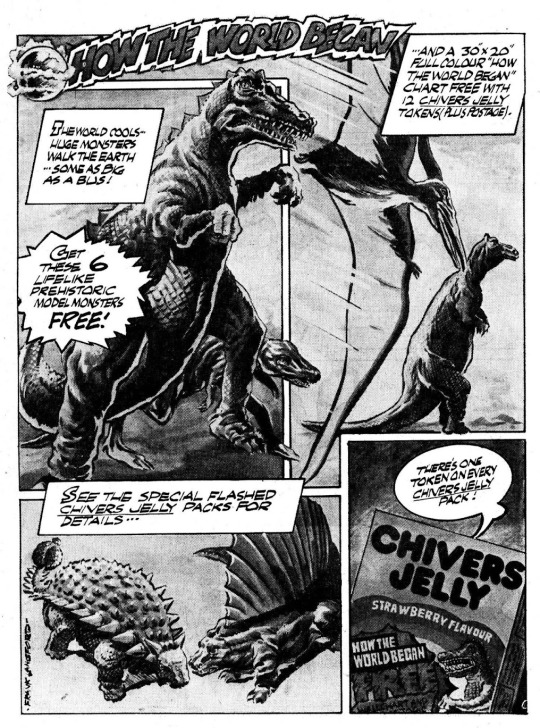
#23mar#1977#chivers jelly#frank langford#how the world began#allosaurus#pteranodon#ankylosaurus#dimetrodon#saltoposuchus#trachodon#02apr
2 notes
·
View notes
Text
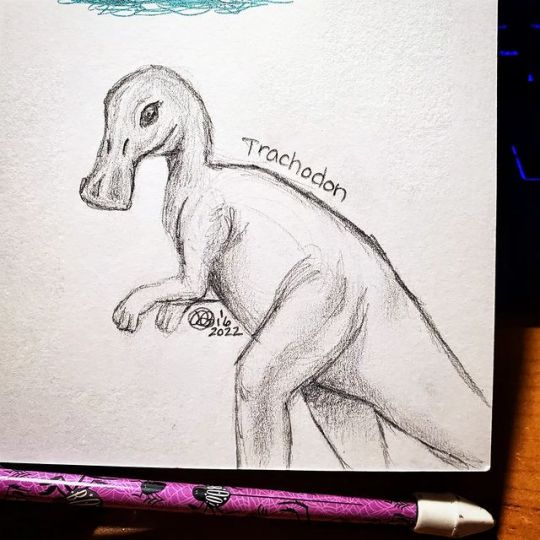
Thanks to space.trucks on Instagram for the inspo! 🦕💜
3 notes
·
View notes
Photo

Once upon a time, dinosaurs looked like this. Except they really didn’t. But we thought they did. And now we don’t. So, if I want to be accurate, I would say that once upon a time dinosaurs did not look like this. But I purposely drew these dinosaurs inaccurately because this is a homage to vintage palaeoart. So yes, once upon a time, dinosaurs looked like this. But they really didn’t.
#Palaeoblr#Paleoblr#Paleontology#Palaeontology#Dinosaurs#Dinosaur#Prehistoric#Prehistoric Life#Vintage#Old School#Trachodon#Hadrosaurs#Pteranodon#Pterosaurs#Brontosaurus#Sauropods#Archaeopteryx#Birds#Stegosaurus#Stegosaurs#Triceratops#Ceratopsians#Tyrannosaurus#T. rex#Tyrannosaurs#Theropods#Struthiomimus#Animals#Mesozoic#Era
47 notes
·
View notes
Photo
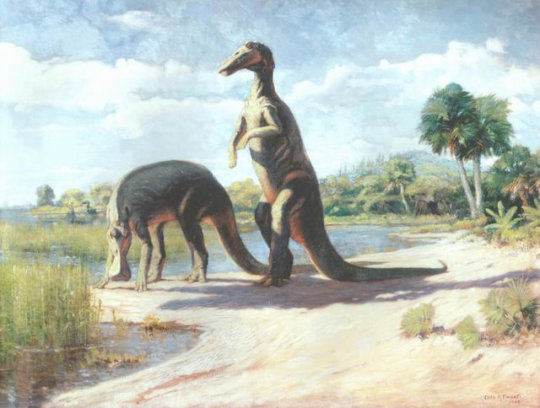
Trachodons by Charles R. Knight (c. 1905)
3 notes
·
View notes
Note
A very important question: Favorite dinosaur?
Ah, dinosaurs. I recall many boys in my youth being utterly fascinated by them. If not prehistoric reptiles, then automobiles.
I’m afraid I must disappoint you when I say I was not one particularly absorbed by such creatures. My childhood interests were more... imaginative. Pretending to be other people; if not hosting tea parties with the neighbor girl, I was off in the Wild West-- saving towns from brutes who wished to do harm to the good people.
However, after some thought so as not to disappoint, an answer as come to mind: the archaeopteryx. I’m fascinated by the notion of picturing an amalgamation of feathers and reptilian features. And many of the artistic renders I’ve seen make them appear quite majestic.
I hope that satisfies your curiosity.
#Take Pen and Ink and Write It Down#[I prefer Trachodons.#Which should surprise none that I would gravitate towards the duck billed dinosaurs.}#Anonymous
22 notes
·
View notes
Photo

Retro vs Modern #12: Edmontosaurus annectens
Hadrosaurs were first discovered during the 1850s in North America, with the eponymous Hadrosaurus being both one of the most complete dinosaurs known at the time and also the first dinosaur skeleton to ever be mounted and displayed.
Like many other dinosaurs of the time hadrosaurs were initially reconstructed as bipedal with an upright kangaroo-like pose. Early in the history of their study their wide flat "duckbill" snouts were thought to indicate they were semi-aquatic, and they were frequently portrayed swimming and wading while feeding on soft water plants.
While elaborately bony-crested hadrosaurs like Parasaurolophus have become some of the most famous and recognizable members of the group, the species that's gone through the most radical changes in our understanding in recent years is probably Edmontosaurus annectens.
1890s-1960s
Edmontosaurus has had an especially messy taxonomic history with various specimens spending decades under many different names, commonly being labelled as Anatosaurus and Trachodon for much of the 20th century. For the sake of avoiding a lot of confusion I'm just going to keep referring to it here as "Edmontosaurus", even though the naming issues weren't properly sorted out until the 1990s.
The earliest specimen of what we know call Edmontosaurus was discovered in the 1890s, and the first to actually bear the genus name was the closely related species Edmontosaurus regalis discovered in the 1910s. For many decades it was mostly reconstructed in the then-typical "tripod" posture and seen as being highly aquatic, with an exceptionally well-preserved "dinosaur mummy" specimen being used to support that view – skin impressions around its hands were interpreted as paddle-like webbing used to swim.
The mummy also showed fairly thin and delicate skin, with a pattern of many tiny scales dotted with clusters of larger scales, and what appeared to be a fleshy skin frill running along Edmontosaurus' neck and back.
2020s
The idea of amphibious hadrosaurs was finally challenged in the mid-1960s, at the start of the Dinosaur Renaissance, with details of their anatomy, possible stomach contents, and the environments that their fossils had been preserved in all being used to help reinterpret them as fully terrestrial herbivores that walked on four legs and ran on two. The discovery of Maiasaura nesting colonies in the late 1970s also revealed a lot of new information about the life history of these dinosaurs, and helped to popularize the image of them as social animals living in herds and caring for their young.
From the 1990s onwards new discoveries of additional "mummies" of both Edmontosaurus and other hadrosaurs have given us even more insights into the soft parts of their anatomy. Their necks and tails were much more thickly muscled and chunky than their skeletons alone suggest, the frill may have had a sort of rectangular segmented appearance, and the webbing on their forelimbs was actually more of a "mitten" that bound their hands into fleshy weight-bearing pads. And instead of a broad "duckbill" they actually had large hooked beaks covering their snouts, giving then more of a horse-like head shape.
We now know Edmontosaurus lived during the very end of the Cretaceous, about 73-66 million years ago, with the older part of that time range represented by Edmontosaurus regalis in Western Canada and the younger part represented by Edmontosaurus annectens in Western Canada and the Western and West North Central United States. It was one of the largest known hadrosaurs with most adult specimens around 9-12m long (~30-39'), but some of the very largest known partial remains suggest the existence of rare enormous "super-adults" that were about 15m long (49').
Edmontosaurus was probably a grazing animal primarily eating tough low-growing foliage like horsetails, cropping off mouthfuls with its beak and then grinding them up with batteries of hundreds of teeth in the back of its jaws using a unique complex chewing motion.
Its skin had a complex texture of varying scale shapes and sizes across its body, and one mummified specimen of Edmontosaurus regalis shows a raised bumpy pattern of large scale clusters on its neck and a fleshy crest on the top of its head. It's currently unclear if these were sexually dimorphic features and we don't know if Edmontosaurus annectens actually had them too, but I've speculatively included them in this reconstruction anyway.
And despite being one of the most intensely-studied and completely known non-avian dinosaurs in the world, Edmontosaurus is somehow still continuing to surprise us. Parts of the mummy specimen nicknamed "Dakota" are still being carefully prepared, and in late 2019 the North Dakota Geological Survey teased an unexpected discovery – a large single hoof-like nail on the front of its hand, unlike anything ever seen before on a dinosaur, and suggesting that Edmontosaurus may have been much more specialized for purely quadrupedal movement than previously thought.
Official details on the "hoof" still haven't been published yet, but whenever it happens it'll be exciting to find out just what's actually going on there.
———
Nix Illustration | Tumblr | Twitter | Patreon
#retro vs modern 2022#science illustration#paleontology#paleoart#palaeoblr#edmontosaurus#saurolophinae#hadrosauridae#hadrosaur#ornithopoda#ornithischia#dinosaur#art#retrosaurs#i will stomp you to death with my hooves
1K notes
·
View notes
